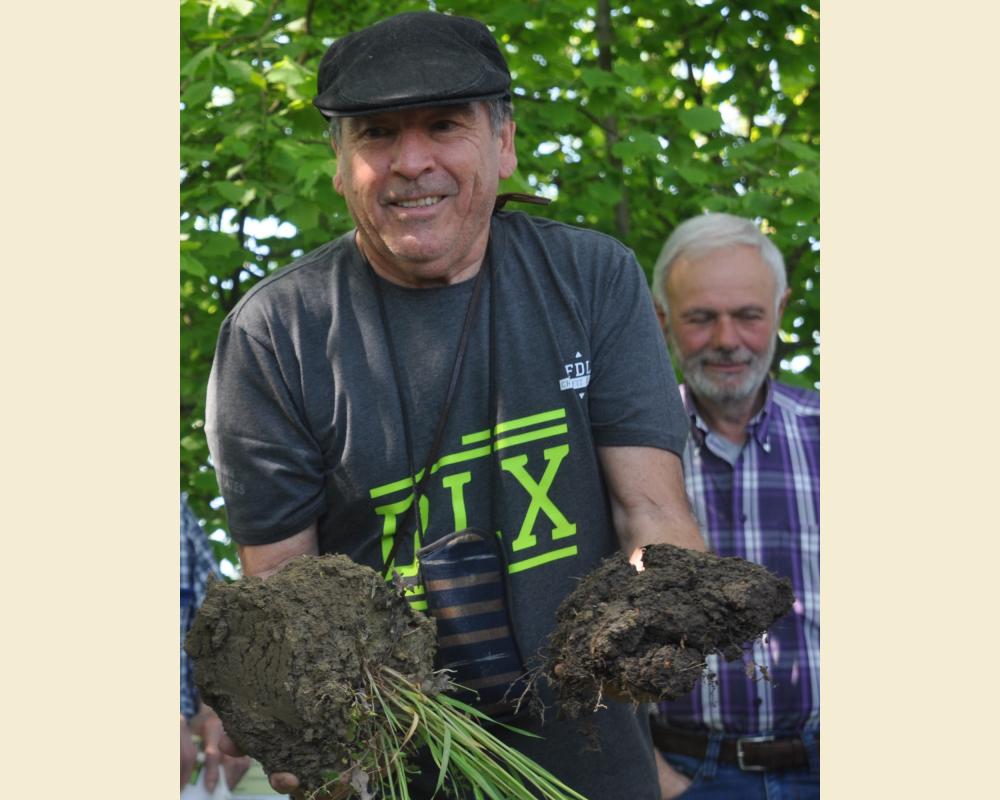Interview with Miguel Altieri: the social challenge of agroecology

Below is an interview conducted by Adriano Del Fabro (agricultural expert, agricultural and agri-food journalist, author of numerous volumes on plants and gardening) with Miguel Altieri.
The social challenge of agroecology
An exclusive interview with Miguel Altieri
by Adriano Del Fabro
The first edition of 'Agroecology', by Miguel Altieri, dates back to 1983. In 1987, the English version came out and, in 1991, the Italian version (for Franco Muzzio Editore), which I bought, read with profit and emphasized abundantly. An important book, later reprinted, also for the caliber of the author then associate professor and entomologist at the Division of Biological Control of the University of Berkeley, in California. And of the one who wrote the presentation, the great and unforgettable entomologist, Giorgio Celli, who, among other things, noted: “Sustainable agriculture wants to be a more ecological version of industrial agriculture, an agriculture where we no longer focus only on quantity, but on quality, in the broadest possible sense, ranging from the quality of the product to that of the territory, and to that quality of life that is now in the aspiration of all of
us”.Forty years after that first edition, during an event held in Caltana di Santa Maria di Sala (Venice), I met Altieri for an interesting in-depth chat and “updating”.
What are the most significant agricultural changes that have taken place in recent years?
I think that the most important change is not related to the scientific basis of agroecology where, of course, more knowledge has accumulated, but in the significant adoption of agroecology in its social aspect, in Latin America and in other parts of the world, for example, through the Via Campesina. The most important peasant movement in the world, fights for food sovereignty and has adopted agroecology as the technical basis for the productions of its associates. At the same time, there is an appropriation of the concepts of agroecology by many university and international institutions that deal with food and agriculture. The fact is, however, that this appropriation eliminates the social and political dimension of agroecology, a very important dimension. Agroecology, in fact, is not only a series of principles and production techniques for a more resilient agriculture, but it also contains ideas for changing the dominant food system. There is a lot of confusion on the issue today, where many adopt the technical principles of agroecology but transform them and, for example, insert them into what is called regenerative agriculture. A concept that was born from an American food system giant, General Mills. In this case, however, the ultimate goal is to capture a larger share of carbon dioxide to enter the carbon credit market. Otherwise, for me, agroecology is a science that contains a series of principles to optimize various alternative systems of agriculture. We have already verified this with organic farming and “natural” agriculture that follows Masanobu Fukuoka's guidelines.
So, if everything has changed in recent years, has agroecology also changed?
In these forty years there has been a lot of scientific research that has demonstrated, with all evidence, how agroecology works. But that's not enough. It is necessary to create an alliance with consumers: a space that is still little frequented and that must grow and develop. Organic products represent a niche market within the capitalist system. Agroecology, in my opinion, must be a transformative agricultural system, a proposal for change for a new food model. Some experiences in this regard are already active, but they are still too rare. The relationship between producer and consumer cannot only be economic, but it must also represent an exchange of values: peace, nonviolence, biodiversity...
What is the relationship between agroecology and technological and digital evolution?
For me, digital agriculture tools, such as drones, for example, can be used if necessary. The issue, in this case, is that if you use commercial drones (with non-open source operating systems), the information that is collected on properties and crops, ends up (free of charge) in the databases of the companies that control the data. It is therefore necessary to democratize the system so as not to give away to others, for their purposes, information about their work. But these technologies still seem to me to be far from the needs of farmers in Latin America where a lot of work is still being done with visual indicators, which are easier to manage. We need simple technologies based on farmers' requests for use and not vice versa.
Among the “green” initiatives of the EU there is also that of restoring part of the land to natural areas by 2050, causing the opposition of all agricultural organizations. But isn't biodiversity also a value for agricultural productivity?
I am not fully aware of how the European agricultural world deals with these issues and of the various protests that have taken place. I think, however, that we should not forget that European farmers receive various subsidies for their work and for the rules they must respect, unlike their colleagues in Latin America who receive nothing. In the global economic model, European producers like to sell their products abroad, but they are not as happy to import them and, then, they apply protectionism. A radical, political change is needed. In Latin America, more than 50 million hectares are cultivated for products destined for Europe (coffee, bananas, citrus fruits, avocados), all without public support. Anyway, I want to emphasize that the benefit of biodiversity for agriculture is certainly not immediate, but in the long term it exists, with the same production.
Regarding the climate crisis, in your opinion, is agriculture part of the problem or part of the solution?
Industrial agriculture is part of the problem, since it produces 30% of greenhouse gases. Peasant agriculture cools the problem. The current situation is the result of the reduction of biodiversity and the failure to capture carbon dioxide. The agroforestry system is not adopted to capture more carbon dioxide, but it is a consequence of the techniques used. In the United States, farmers implement specific techniques to capture carbon dioxide because the market for carbon credits is cheaper than direct production. Right now, the north of the world is historically responsible for the emissions that emerging countries, so far, have suffered and digested. China and India became one about fifteen years ago. But if you look at per capita emissions, in China it's 7 tons; in Honduras it's 0.5 tons; while, in the United States, it rises to 20 tons. To reach the global temperature limits set at international level, it would be necessary not to exceed 12 tons per capita. Therefore, this means that the countries of the north of the world should drastically reduce their emissions and, consequently, their consumption. Hence the ecological imperialism of the trade in carbon credits.
In conclusion, what are the most important actions to take in order for agroecology to consolidate and assert itself?
An organized social movement is needed; an ever stronger relationship between farmers and consumers with the support of universities and agrarian policy. Of course, it is necessary to ensure that an increasing number of farmers apply truly agroecological techniques, rich in biodiversity in the landscape, in crops and in genetics; capable of protecting the quality of the organic substance and the biological life of the land. Another important point concerns corporate self-sufficiency to minimize the intake of substances or products from outside. Finally, it is necessary to create model, educational companies, what I call an “agroecological beacon”, open to external visits to make known and disseminate
the potential of agroecology.



